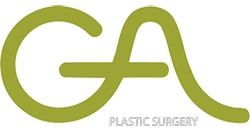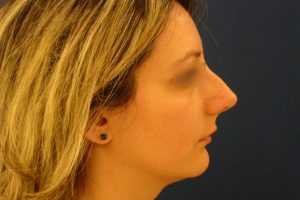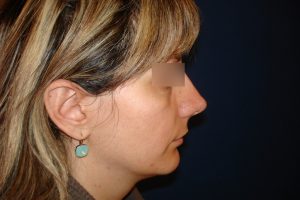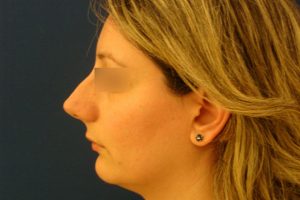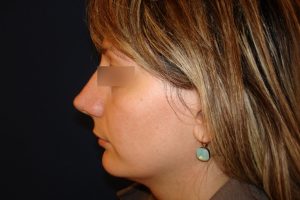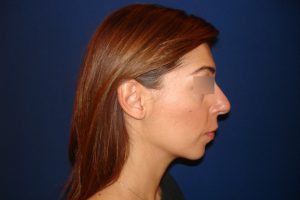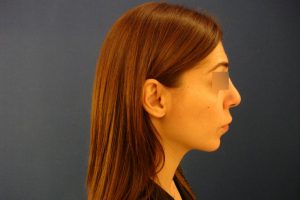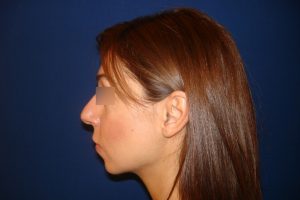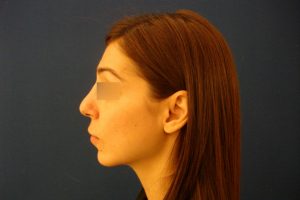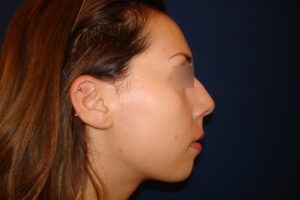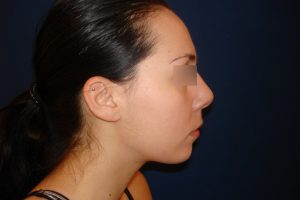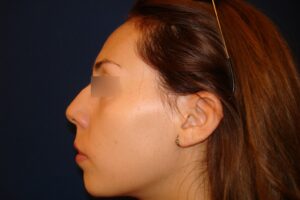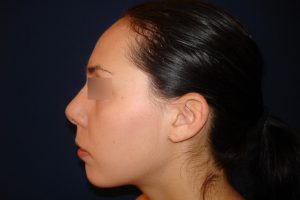For those patients dissatisfied with the size or shape of their nose, a rhinoplasty can be performed for reshaping purposes. In cases where there is some associated breathing obstruction, internal nasal surgery such as a septoplasty may need to be performed. A rhinoplasty often involves removal of a hump, refining a bulbous or thick tip, and narrowing a nose. This can improve the proportionality of the nose to other facial features and thereby create a more smooth and harmonious appearance.
The surgery is done on an outpatient basis under general anesthesia. In addition to the nose itself, the eyelid region may become quite swollen and bruised. Patients often have nasal packing which is removed in the first few days. There is usually some type of external splint which adheres to the nose; this is removed 7-10 days after surgery. Any stitches inside the nose dissolve, while those externally are removed a week after surgery. The incisions are very well hidden across the columella, the fleshy structure between the nostrils, and internally in the nose. The final result may not be apparent for several months and it usually takes a full year to completely appreciate the final result.
